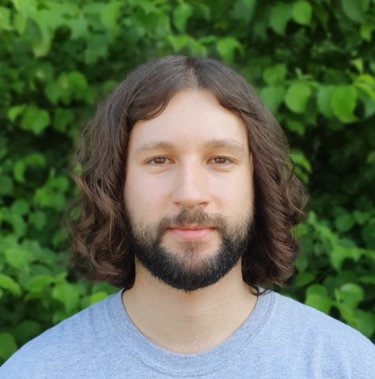Cardiovascular hemodynamics estimation via geometric deep learning
Julian Suk is a PhD student in the Department of Mathematics of Imaging & AI. (Co)Promotors are prof.dr. C. Brune & dr. J.M. Wolterink from the Faculty of Electrical Engineering, Mathematics and Computer Science.
 This thesis explores the integration of geometric deep learning for estimation of hemodynamic biomarkers related to the artery wall and the artery lumen. This can take the form of surrogate models for computational fluid simulation as well as direct estimation of (general) clinical risk factors. We study mesh-based neural networks for their native ability to represent complex arterial topology while not being restricted to simplified shape parametrisation. Leveraging these models, we are able to estimate steady-state as well as transient (pulsatile) hemodynamic quantities on the artery wall. Since cardiovascular flow exhibits inherent symmetries – equivariance to rotations and translations – we explore the use of group-equivariant neural networks with which we find continued success. Their benefits particularly manifest in a reduced requirement for training data which is invaluable in the medical domain where large labelled datasets are notoriously hard to come by. Further addressing the data bottleneck as well as noise in real-world data, we explore the incorporation of physical conservation laws in the model training, yielding so-called physics-informed neural networks. Our approach is built on discrete differential operators via 3D finite differences and we find that it can reliably circumvent measurement noise and learn – from 4D flow MRI data – to estimate 3D velocity fields in new patients. Addressing the challenges of scalability and information bottlenecks (over-squashing), we explore the use of transformer neural networks. We extend the (group-equivariant) geometric algebra transformers and propose a scalable, general-purpose model architecture based on cross-attention which we call LaB-GATr. Leveraging this powerful new model, we tackle the estimation of pulsatile, 3D velocity and pressure fields within the coronary artery lumen in an operator learning framework. We treat steady-state simulations as highly informative "system response" and use it as powerful prior for the prediction of transient hemodynamic fields. Putting the developed models into perspective, we conduct a benchmark study for estimation of hemodynamic biomarkers on the artery wall. Lab-GATr proves superior to the remaining tested models. To wrap it all up, I discuss limitations and open ends and position the conducted research in the broader picture of biomedical engineering as well as machine learning.
This thesis explores the integration of geometric deep learning for estimation of hemodynamic biomarkers related to the artery wall and the artery lumen. This can take the form of surrogate models for computational fluid simulation as well as direct estimation of (general) clinical risk factors. We study mesh-based neural networks for their native ability to represent complex arterial topology while not being restricted to simplified shape parametrisation. Leveraging these models, we are able to estimate steady-state as well as transient (pulsatile) hemodynamic quantities on the artery wall. Since cardiovascular flow exhibits inherent symmetries – equivariance to rotations and translations – we explore the use of group-equivariant neural networks with which we find continued success. Their benefits particularly manifest in a reduced requirement for training data which is invaluable in the medical domain where large labelled datasets are notoriously hard to come by. Further addressing the data bottleneck as well as noise in real-world data, we explore the incorporation of physical conservation laws in the model training, yielding so-called physics-informed neural networks. Our approach is built on discrete differential operators via 3D finite differences and we find that it can reliably circumvent measurement noise and learn – from 4D flow MRI data – to estimate 3D velocity fields in new patients. Addressing the challenges of scalability and information bottlenecks (over-squashing), we explore the use of transformer neural networks. We extend the (group-equivariant) geometric algebra transformers and propose a scalable, general-purpose model architecture based on cross-attention which we call LaB-GATr. Leveraging this powerful new model, we tackle the estimation of pulsatile, 3D velocity and pressure fields within the coronary artery lumen in an operator learning framework. We treat steady-state simulations as highly informative "system response" and use it as powerful prior for the prediction of transient hemodynamic fields. Putting the developed models into perspective, we conduct a benchmark study for estimation of hemodynamic biomarkers on the artery wall. Lab-GATr proves superior to the remaining tested models. To wrap it all up, I discuss limitations and open ends and position the conducted research in the broader picture of biomedical engineering as well as machine learning.




